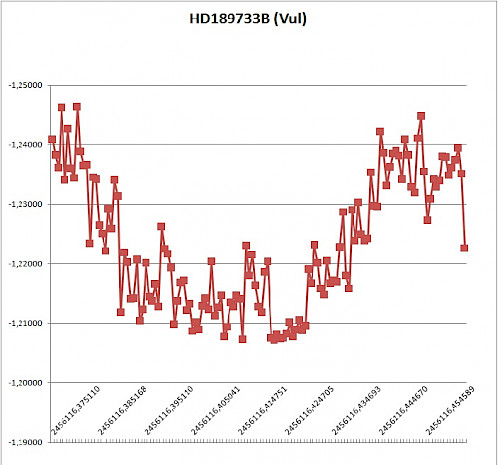Exoplanets
One method to measure the existence of a planet having an orbit around a far distant sun is to measure the change of the flux of the central in case planets a performing an partial eclipse.
Because of the - in normal cases - small size of the planet compared to the central star, the expected variation in flux is very low. In most case the varation is less than 0,02 magnitudines. Even that this sounds like a small values, CCD's enable even amatuer astronomers to try to measure this events.
In this section you will find some of my experiences observing exoplanets.
HAT-P-32b

HD 189733b
During white nights (including a significant backround brightness driven by the moon) I got the chance to pick some data on exoplanet HD 189733B pretty close to the famous planetary nebulae M27 - with a full frame size CCD both objects are in the FOV.
The beauty of this object is: apparent brightness is rougly 7 magnitudes which allows short exposure times in order to take a greater number of datapoints together with a relative big brightness variance (29 milli mag) within a relativ short time (period ~ 109min). So it's a very good object for training and learn how to improve your data.

3 times 7sek L-canal exposures per datapoint.
C11 290/2800mm / ST11000M+AO8@EQ6